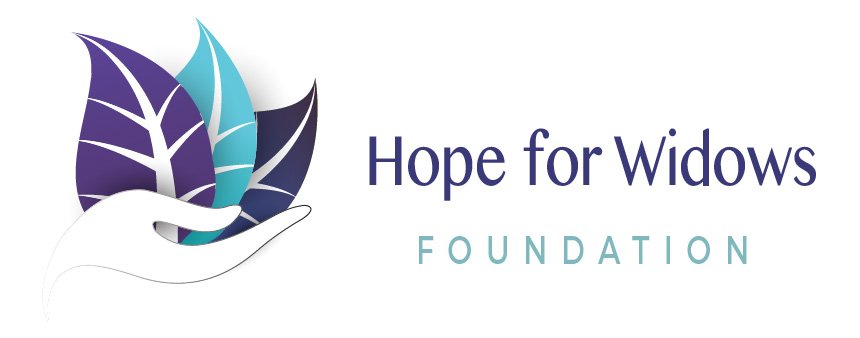 It was a steamy July day in 1997 when my husband put my wedding ring on the third finger of my left hand. We were in a small wedding chapel surrounded by ten attendants comprised of our children, relatives, and best buddies. The pews were full of friends and relations, and the room was hot. Really hot. My bridal attendants were silently mumbling curses at me under their breath, because I thought the lovely lit candles they carried would lend a romantic air to the ceremony. They certainly did, but the ambiance was spoiled a bit by the sweat dripping off each of their brows.
It was a steamy July day in 1997 when my husband put my wedding ring on the third finger of my left hand. We were in a small wedding chapel surrounded by ten attendants comprised of our children, relatives, and best buddies. The pews were full of friends and relations, and the room was hot. Really hot. My bridal attendants were silently mumbling curses at me under their breath, because I thought the lovely lit candles they carried would lend a romantic air to the ceremony. They certainly did, but the ambiance was spoiled a bit by the sweat dripping off each of their brows.
The temperature outside was probably 95 degrees, and the air conditioning in the packed room wasn’t keeping up. Rick, himself, was perspiring profusely, and I watched somewhat helplessly as the sweat rolled from the top of his shiny bald head down the side of his face and dripped off his chin. Every so often, I surreptitiously reached forward to wipe his brow in an attempt to stem the flow. I hoped it wouldn’t appear to those in attendance that the reason he was sweating was in any way related to fear at the idea of joining with me for life. After months of preparation and hours of striving to make everything perfect for my very first marriage at age 40, the extremely damp groom and wilted attendants were definitely not the look we were aiming for.
Despite chuckling to myself at the more comical aspects of my “perfect day,” when Rick put my wedding ring on my finger, all my humorous thoughts ceased. This was the moment I had dreamed of since I was a young girl: my wedding day to a man who chose to love me forever, a man who selected me above all others, a man who would love and cherish me and share my life with me. “With this ring,” he said, “I thee wed,” as he vowed to love me for the rest of his life.
And he did. He loved me for the next twenty years. He loved me until the day he died.
And now, it’s time to remove the ring. It’s been eighteen months today, since Rick succumbed to the side effects of small cell lung cancer. A year and a half since I held his hand as he lay unconscious in a hospital bed while I whispered quietly to him that he could go, he could stop fighting. And I thanked him for all the love he had shown me since we took those vows so many years ago.
For at least twelve months after his death, I felt like we were still married. My husband was with me; he just wasn’t physically here. I talked to him throughout the day and into the night as I pictured his spirit hovering nearby. Rick Palmer was a strong man. He wouldn’t leave me if there was any way to cross that barrier between life and death. I knew his spirit was right here with me, urging me on, helping me cope, embracing me with his invisible arms of love.
For many of those first months, I was in an emotional fog as I attempted to straddle both worlds. Half of me existed in the real world, working, socializing, moving forward, struggling to relearn how to live my life as a woman alone, as a person without a partner. But the other half of me had a difficult time relinquishing the past. I was focused on him: looking at photos, dreaming of him, remembering him, refusing to let him go as I processed my grief.
A few months ago, I noticed the fog had lifted and had been been gone for awhile. My feet are planted firmly in the present with fond memories of Rick floating through my mind a few times each day, but I’m no longer immersed in constant thoughts of him and our time together. Last month, when I was composing my book, I reread my blog entries and poetry from the first year, and I realized how different I feel now. I’m myself again, not a half woman striving to cope with grief. I’m no longer living half a life with a great portion of myself focused on Rick and my loss. As I took stock of where I was, I realized that I have finally faced the truth: I am alive and he is not. And I can’t bury myself in the past and his memory without sacrificing the life I’ve still got left.
And with that realization, came the decision that it’s time to remove the symbol of our marriage, the beautiful ring that he ceremoniously placed on my left hand so many years ago. To me, continuing to wear the ring is a symbol that I am currently a married woman, a woman who has a living, breathing husband who shares my life. A man who’s there with me, experiencing my daily joys and sorrows. A man who responds when I talk to him, and not just the imagined words I hear only in my head.
Not everyone feels the same. Many, many widows have told me they will always wear their ring, that they are married forever and the ring is symbolic of that. After seeking out opinions and looking through grief support groups and advice blogs in search of options for how to handle my own wedding ring, I found several possibilities: wearing it on a chain around my neck, putting the diamond into a new setting or making into a widow’s ring, redesigning it into a brooch or pin, or putting it into a special box. For now, I’ve simply decided the right option for me is to move the ring from my left hand to the right. At this stage, I consider the ring a symbol of my past life. But I also feel that it’s important to make the act of removing it somehow significant. There was a ceremony when he put the ring on my finger. Why isn’t there any type of ceremony for the day I take it off?
I could find very little online discussing a way to make the day I remove his ring into something meaningful. My counselor searched as well, and she found only one mention of a ceremony or a rite for the widow who chooses to remove her ring. It’s a ritual that takes place involving the widow, an officiant, and a few loved ones. Rabbi Becca Gould describes the meaning behind the ritual:
Ritual for a Widow to Remove Her Wedding Ring
A widow’s emotional process of removing her wedding ring is a significant milestone in the journey of grief. A ritual which draws on traditional liturgy could ease the pain of this process. The ritual would be done in a comfortable private space, such as the widow’s home with a few very close friends by her side. The ritual would be led by a rabbi, spiritual leader or close friend chosen by the widow. This person should be able to hold the space and allow the focus to be on the widow and what she is going through. The ritual can be adjusted to meet the individual needs of the widow.
I especially like this part that the officiant says to the widow:
“We gather here to support ___________ in her time of letting go. We recognize that life is precious and how much ____________ has been through. We recognize her great loss and her great bravery in reaching this point.”
“…her great loss and her great bravery in reaching this point…” Surviving the death of my husband surpasses all the challenges I’ve ever faced in my lifetime.
And these words, spoken by the widow:
“Do not let me be dragged down by guilt, regret and sorrow, speaking peacefully, but still with sadness in my heart.” (verse 3)
So often during the grieving process, I was dragged down by guilt, regret, and sorrow. Could I have done something differently? Would he still be here? Did I let him know how much he meant to me? Could I have been a better wife? And now I hear that silent nagging voice asking, If I remove this ring, am I being unfaithful to Rick? Am I leaving him and all that we shared behind?
For the past couple of months, I’ve worked through the guilt and the doubts, and, now, I’m at this “time of letting go…” And while I don’t want a ceremony that includes an officiant or friends or family, or anything as formal as all that, I do want to take a few minutes to make the moment I remove this significant symbol of our marriage into something meaningful and reflective of our marriage.
And, so, one evening this Valentine’s weekend, I’ve decided to spend an hour or two out under the gazebo Rick erected in our yard, under the wind chimes that hold his ashes. I’m going to sit where we spent so many evenings together toasting our life and our future, and I’m going to toast him, talk to him, and tell him once again how much his love and life meant to me. I am acknowledging to myself, and to him, that I can no longer hang onto the past, although I know I’ll continue to experience the sorrow of losing him for the rest of my life.
To further quote the Jewish ritual…
“While feelings of grief can visit us throughout our lives, please honor all the grieving done thus far. … Help her to step forward and to refocus the deeds of her hands on her own creativity and of building her life anew.”
After eighteen months of grieving, I’m ready to refocus on my future and “build my life anew.” And this small private ceremony in which I’ve chosen to remove my ring is my own symbolic way of taking yet another step forward towards that future.


Thank you Katherine for sharing your soul.
My love has been gone for 15 months, and I still feel married. Although we were married for only nine years, we sure put in a lot of loving, traveling and quiet times. He was only 72, but had a lot of health issues, which I knew of when we met (although not all, he didn’t want to scare me off) lol
There are days when I cry at the sight of a cardinal, or at the smell of motor oil, or a picture of a sailboat…
But I was blessed to have been loved and cared about and protected… Some women live their entire lives and know no such happiness.
I heard myself laugh out loud last week, and was surprised that that familiar sound was emanating from my soul. Yes, soul.
I hope to do that more often. It will signal that I am on my way….